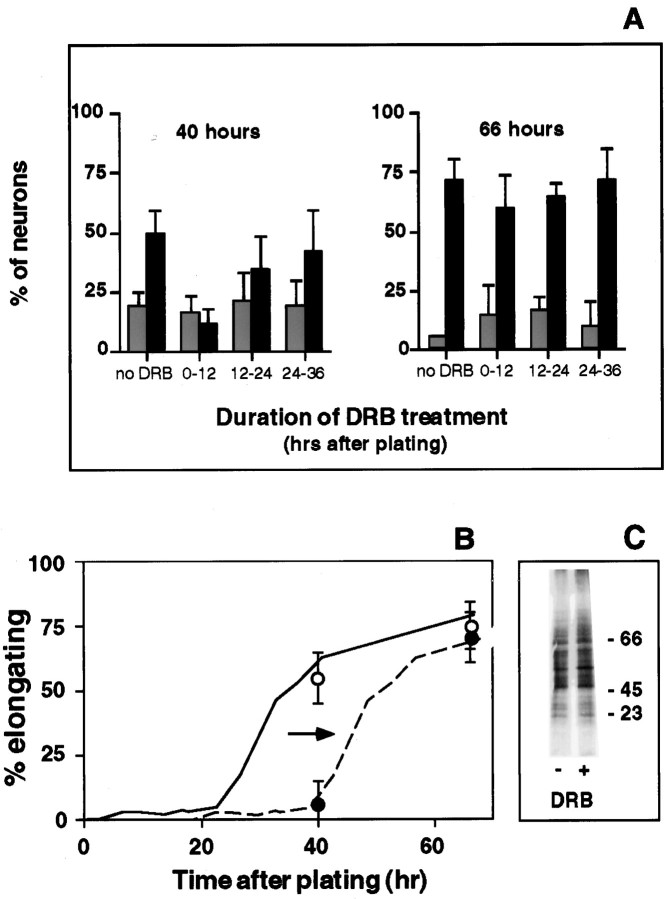Fig. 7.
Onset of elongation from naive neurons requires a finite period of new gene transcription after plating.A, Naive DRG cultures were exposed to DRB, a reversible inhibitor of mRNA synthesis for the indicated intervals. Neurons in both DRB-treated and untreated cultures were fixed 40 and 66 hr after plating and visually scored as arborizing (gray bars) and elongating (black bars). Early DRB treatment dramatically reduced the percentage elongating at 40 hr, but not at 66 hr. When transcription was blocked between 12 and 24 hr after plating, the effect was less pronounced, and by 24 hr after plating, neurons were no longer dependent on ongoing transcription to initiate and sustain neurite elongation. Bars represent the mean ± SD from three separate experiments with duplicate cultures in each experiment.B, Estimate of delay produced by transient DRB treatment. The percentage of neurons with elongating neurites was rescored by quantitation of length and branching frequency.Filled circles represent neurons treated with DRB for the first 12 hr; open circles represent control neurons in untreated cultures. Each data point represents the mean ± SD for three separate experiments (30 individual neurons). These data were then compared to the previously determined time course for the onset of elongation under standard conditions (solid curve, from Fig. 6B). To estimate the length of delay produced by transient DRB treatment, we displaced this curve to the right until it intersected with the data points for DRB-treated cultures. The result indicates that an initial exposure to DRB for 12 hr produces a delay in the onset of elongating growth of ∼16 hr.C, The delay was not attributable to an overall decrease in protein synthesis, because transient DRB exposure for the first 12 hr after plating did not grossly alter protein synthesis measured 12 hr later, when elongating neurites begin to emerge in control but not in DRB-treated cultures.

